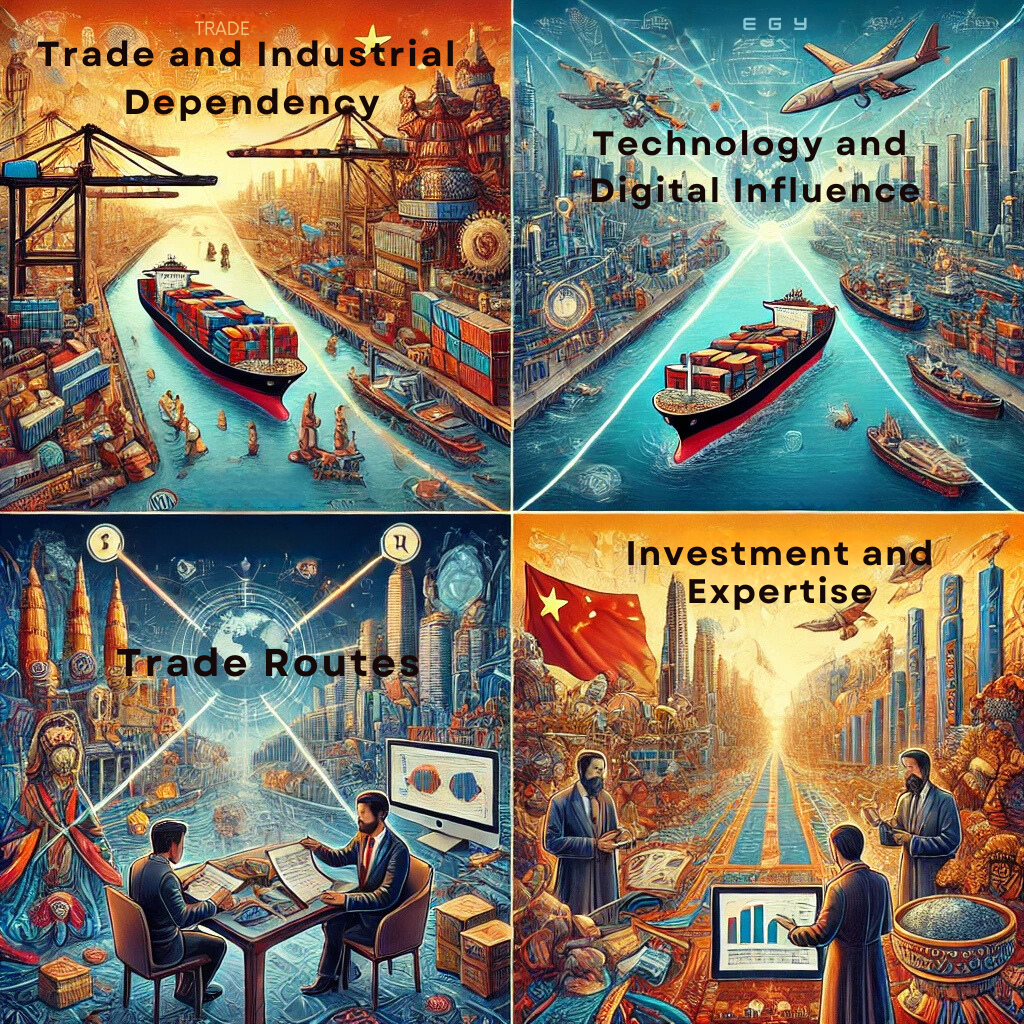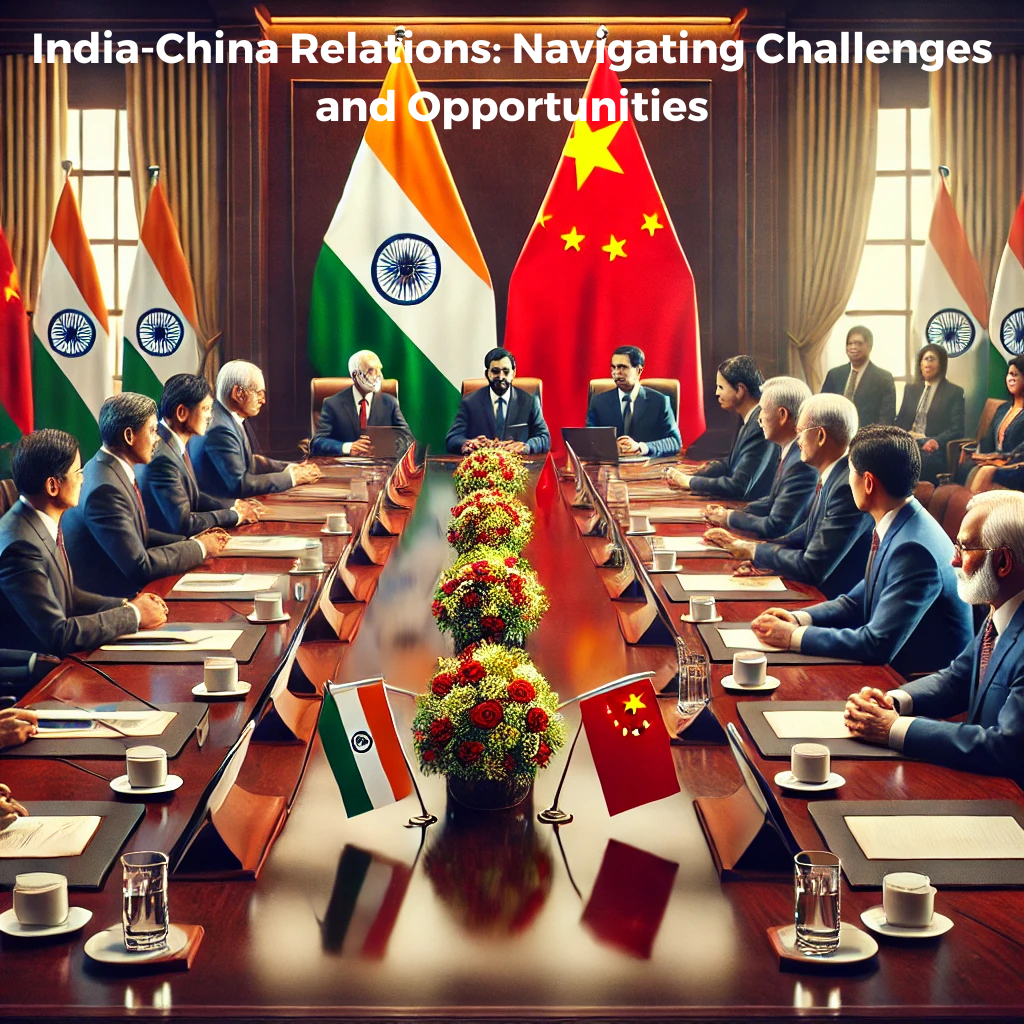In what would turn into the first major progress in quite a long time since the border crisis in 2020, India and China agreed to restore mutual patrolling rights in the Depsang Plains and Demchok. Thereby suggesting a balance tipped to the side of diplomacy engagement in their already strained relationship. Much as it breaks in just ahead of the BRICS Summit in Russia, the timing cannot be downplayed in the pursuit of international relations. This editorial goes further into the essence of India-China relations, outlining the cooperation and contention areas, and its implications for a broader assessment of India’s strategic positioning.
| GS Paper | GS Paper II |
| Topics for UPSC Prelims | India and China, BRICS Summit , Active Pharmaceutical Ingredients, Electric vehicles, Regional Comprehensive Economic Partnership, Galwan Valley, Line of Actual Control, ASEAN, Brahmaputra, Belt and Road Initiative, String of Pearls, Hambantota Port, Semiconductor Mission, Supply Chain Resilience Initiative. |
| Topics for UPSC Mains | Significance of China for India, Major Areas of Contention Between India and China. |
Origin of the Article
This editorial is based on “India-China agreement: Breaking a stalemate” published in The Indian Express on October 23, 2024. It discusses the recent India-China agreement ahead of the BRICS Summit.
Relevance for UPSC Aspirants
Understanding India-China relations becomes important under the UPSC syllabus as it has ramifications for topics like international relations and India’s neighborhood policy. Such an understanding would prove valuable in assessing the geopolitical dynamics that inform India’s foreign policy and strategic interest-one of the most crucial areas for both the Prelims and Mains examination.
Why in News?
The India-China agreement to resume mutual patrolling at Depsang Plains and Demchok is of importance since it forms the first diplomatic initiative after the 2020 border crisis. It would thus be important for UPSC aspirants since this evolves around the geopolitics affecting India’s strategic interests recurring theme in GS Paper 2.
Evolving Landscape of India-China Relations
The India-China relationship has always followed a mix of collaboration and competition. This happens due to elements such as historical tensions, the increasing intensity of economic ties, and the strains imposed upon regional dynamics. Both countries remain on the lookout for solutions to complicated issues impacting regional stability and global geopolitics.
India-China Agreement
The recent agreement between India and China to restore mutual patrolling rights in the Depsang Plains and Demchok in Ladakh marks a significant development since the 2020 border crisis. This diplomatic progress, albeit limited, focuses on reversing Chinese transgressions rather than resolving broader boundary disputes. The agreement gains further significance as it coincides with the BRICS summit, reflecting a strategic moment for both nations amidst ongoing tensions.
Significance
The India-China agreement signifies a cautious diplomatic stride toward reversing Chinese transgressions in Ladakh. Despite the limited scope, this development at the BRICS summit symbolizes an attempt to thaw relations amidst the lingering border crisis. Restoring mutual patrolling rights could pave the way for future dialogue and conflict resolution, underscoring the importance of diplomatic engagement in maintaining regional stability.

Significance of China for India
China plays a multifaceted role in India’s economic landscape, serving as a major trading partner and technology provider. Despite existing tensions, India’s dependency on Chinese imports for industrial raw materials, digital infrastructure, and investments remains significant. Understanding China’s strategic importance can help India navigate the complexities of bilateral relations while seeking opportunities for growth and collaboration.
Industrial Raw Material Dependency
India relies heavily on Chinese imports for essential industrial raw materials and intermediate goods. With China as its largest trading partner, India sources over 70% of Active Pharmaceutical Ingredients and significant portions of electronic components and solar equipment from China. This dependency highlights the critical role China plays in India’s industrial supply chain, necessitating strategic planning for diversification.
Technology and Digital Infrastructure
Despite security concerns, Chinese technology significantly influences India’s digital landscape. Chinese smartphone manufacturers dominate the Indian market, and critical telecommunications equipment often contains Chinese components. Additionally, India’s burgeoning electric vehicle sector relies on Chinese battery technology, emphasizing the intertwined nature of technological advancement and security considerations.
Investment and Expertise
Chinese investments have been pivotal in the growth of Indian startups and infrastructure development. With substantial Chinese funding in unicorn startups and expertise in high-speed rail systems, China continues to contribute to India’s industrial and technological advancement. This underscores the importance of balancing foreign investment with national interests to foster sustainable growth.
Trade Route Dependency
India’s trade routes often intersect with China’s sphere of influence, particularly in Southeast Asia. Despite opting out of the Regional Comprehensive Economic Partnership, India’s trade heavily relies on routes through the South China Sea and Malacca Straits, where China holds significant sway. Navigating these dependencies requires strategic diplomatic and economic efforts to ensure regional connectivity and trade security.
Major Areas of Contention Between India and China
India and China face significant challenges in their bilateral relationship, marked by border disputes, economic imbalances, and strategic competition. Understanding these areas of contention is crucial for devising effective strategies to manage tensions and foster cooperation where possible, ensuring stability in the region.
Border Disputes and Territorial Claims
The Line of Actual Control (LAC) remains a hotspot for India-China tensions, with frequent standoffs since the Galwan Valley clash. China’s territorial claims in Aksai Chin and Arunachal Pradesh further complicate relations. Ongoing military infrastructure developments along the LAC highlight the need for diplomatic efforts to mitigate border tensions and prevent escalation.
Economic Imbalances and Trade Deficit
India faces a substantial trade deficit with China, exacerbated by China’s economic maneuvers through ASEAN intra-trade and bilateral FTAs. Despite anti-dumping measures, the trade imbalance persists, necessitating strategic economic policies to address this disparity and enhance India’s competitive position in the global market.
Water Resource Disputes
Control over major river systems, like the Brahmaputra, remains a contentious issue. China’s dam constructions and lack of a water-sharing treaty pose challenges for India. Resolving water disputes requires diplomatic negotiations to ensure equitable resource management and prevent potential conflicts over water security.
Cyber Threats
China’s cyber activities, including attacks on Indian infrastructure and data security concerns, pose significant challenges. The banning of Chinese apps and the exclusion of certain companies from India’s telecom sector reflect ongoing cybersecurity efforts. Strengthening cyber defenses and international collaborations is crucial for safeguarding India’s digital infrastructure.
Regional Influence Competition
China’s Belt and Road Initiative and strategic alliances in South Asia challenge India’s regional influence. The “String of Pearls” strategy, involving bases in neighboring countries, underscores the need for India to enhance its regional partnerships and counterbalance China’s growing presence through initiatives like the Necklace of Diamonds strategy.
Strategic Alliances and Regional Partnerships
China’s military cooperation with Pakistan and assertive regional policies impact India’s strategic interests. India’s engagement with the QUAD and joint military exercises aim to counterbalance China’s influence. Strategic alliances and military modernization are essential for maintaining regional security and stability.
Diplomatic and International Forums
India and China vie for influence in global forums like the UN, SCO, and BRICS. China’s opposition to India’s aspirations for NSG membership and a permanent UNSC seat further complicates diplomatic relations. Navigating these forums requires strategic diplomacy to advance India’s global standing while managing bilateral tensions.
Measures to Balance Relations with China
India must adopt a multifaceted approach to balance its complex relationship with China, focusing on economic diversification, military modernization, and diplomatic engagement. By strengthening regional partnerships and enhancing strategic capabilities, India can navigate the challenges posed by China while exploring avenues for cooperation and mutual benefit.
Economic Diversification and Self-Reliance
Strengthening domestic manufacturing capabilities through initiatives like the PLI scheme and Semiconductor Mission is crucial for reducing dependency on Chinese imports. Collaborating with countries like Japan and the EU for technology transfer and investment can enhance India’s self-reliance and economic resilience.
Strategic Military Modernization
Enhancing military infrastructure along the LAC, including roads and surveillance capabilities, is vital for border security. Acquiring advanced technologies like Predator drones and improving mountain warfare capabilities can bolster India’s defense posture and deter potential threats from China.
Regional Leadership Enhancement
Strengthening ties with neighboring countries through initiatives like BIMSTEC and cultural exchanges can counterbalance China’s regional influence. Developing alternative supply chains and increasing regional connectivity are essential for enhancing India’s leadership and fostering stability in the Indo-Pacific region.
Diplomatic Engagement Strategy
Maintaining dialogue through multilateral forums while asserting core interests is crucial for managing relations with China. Engaging in issue-based coalitions with like-minded countries and balancing partnerships with global powers can ensure strategic autonomy and effective diplomatic engagement.
Economic Leverage Development
Identifying economic strengths and leveraging them in negotiations with China can enhance India’s bargaining position. Developing alternative markets for exports and strengthening global supply chains through initiatives like PM Gati Shakti can reduce dependency on China and enhance economic resilience.
Maritime Strategy Enhancement
Strengthening naval capabilities and maritime cooperation in the Indian Ocean Region is vital for securing strategic waterways. Enhancing port infrastructure through projects like Sagarmala and collaborating with QUAD and ASEAN nations can bolster India’s maritime security and influence in the region.
Conclusion
The recent India-China agreement to restore patrolling rights in key areas marks a significant yet cautious step in stabilizing their complex relationship. For India, this is not just about immediate border concerns but a strategic opportunity to recalibrate its approach towards China. Balancing economic interdependence with military preparedness and diplomatic finesse will be crucial for India to navigate this intricate geopolitical landscape effectively.
| UPSC Civil Services Examination, Previous Year Questions (PYQs) Mains Q. To what extent is the BRICS group relevant in today’s global political and economic context? Discuss the role of India and China within BRICS. (UPSC Mains 2022, GS Paper II) Q. The restoration of patrolling rights in the Depsang Plains and Demchok marks a significant step in resolving border tensions between India and China. Analyze the broader strategic implications of this development in the context of India’s security and diplomacy. |



